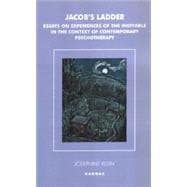
Note: Supplemental materials are not guaranteed with Rental or Used book purchases.
Purchase Benefits
What is included with this book?
| CHAPTER ONE Introduction Bach and Handel, transparency and quiddity | 1 | (24) | |||
|
1 | (1) | |||
|
2 | (2) | |||
|
4 | (3) | |||
|
7 | (3) | |||
|
10 | (2) | |||
|
12 | (1) | |||
|
13 | (1) | |||
|
14 | (3) | |||
|
17 | (2) | |||
|
19 | (6) | |||
| CHAPTER TWO Methodology, language, focus, limits, assumptions, method | 25 | (18) | |||
|
26 | (1) | |||
|
27 | (2) | |||
|
29 | (2) | |||
|
31 | (2) | |||
|
33 | (4) | |||
|
37 | (2) | |||
|
39 | (4) | |||
| CHAPTER THREE To sing in the presence of a lion—to talk about the ineffable | 43 | (18) | |||
|
45 | (5) | |||
|
50 | (2) | |||
|
|||||
|
52 | (3) | |||
|
55 | (2) | |||
|
57 | (1) | |||
|
57 | (4) | |||
| CHAPTER FOUR The experience of the Holy: Mysterium Tremendum et Fascinans | 61 | (18) | |||
|
64 | (3) | |||
|
67 | (6) | |||
|
73 | (2) | |||
|
75 | (4) | |||
| CHAPTER FIVE Unselfish love—some theories | 79 | (24) | |||
|
81 | (1) | |||
|
82 | (3) | |||
|
85 | (1) | |||
|
86 | (1) | |||
|
87 | (3) | |||
|
90 | (3) | |||
|
93 | (2) | |||
|
95 | (1) | |||
|
96 | (1) | |||
|
97 | (6) | |||
| CHAPTER SIX Love, some examples | 103 | (24) | |||
|
104 | (2) | |||
|
106 | (3) | |||
|
109 | (1) | |||
|
110 | (1) | |||
|
111 | (2) | |||
|
113 | (1) | |||
|
114 | (2) | |||
|
116 | (2) | |||
|
118 | (6) | |||
|
124 | (3) | |||
| CHAPTER SEVEN Blurred boundaries and bliss, union, communion and projective processes | 127 | (22) | |||
|
136 | (1) | |||
|
137 | (3) | |||
|
140 | (3) | |||
|
143 | (6) | |||
| CHAPTER EIGHT Beyond between within above—spatial metaphors and the intersect | 149 | (10) | |||
|
151 | (1) | |||
|
152 | (1) | |||
|
153 | (2) | |||
|
155 | (4) | |||
| CHAPTER NINE Processes in the intersect | 159 | (44) | |||
|
161 | (2) | |||
|
163 | (1) | |||
|
164 | (1) | |||
|
165 | (2) | |||
|
167 | (2) | |||
|
169 | (3) | |||
|
172 | (2) | |||
|
174 | (4) | |||
|
178 | (2) | |||
|
180 | (4) | |||
|
184 | (1) | |||
|
184 | (2) | |||
|
186 | (4) | |||
|
190 | (5) | |||
|
195 | (4) | |||
|
199 | (2) | |||
|
201 | (2) | |||
| CHAPTER TEN Will and attention | 203 | (30) | |||
|
205 | (1) | |||
|
206 | (3) | |||
|
209 | (1) | |||
|
210 | (1) | |||
|
211 | (4) | |||
|
215 | (1) | |||
|
216 | (1) | |||
|
217 | (1) | |||
|
218 | (2) | |||
|
220 | (3) | |||
|
223 | (3) | |||
|
226 | (1) | |||
|
227 | (2) | |||
|
229 | (4) | |||
| CHAPTER ELEVEN Narcissism—the mystics' remedy | 233 | (28) | |||
|
235 | (2) | |||
|
237 | (2) | |||
|
239 | (5) | |||
|
244 | (3) | |||
|
247 | (1) | |||
|
248 | (1) | |||
|
249 | (1) | |||
|
250 | (2) | |||
|
252 | (2) | |||
|
254 | (2) | |||
|
256 | (4) | |||
|
260 | (1) | |||
| REFERENCES | 261 | (12) | |||
| INDEX | 273 |
The New copy of this book will include any supplemental materials advertised. Please check the title of the book to determine if it should include any access cards, study guides, lab manuals, CDs, etc.
The Used, Rental and eBook copies of this book are not guaranteed to include any supplemental materials. Typically, only the book itself is included. This is true even if the title states it includes any access cards, study guides, lab manuals, CDs, etc.